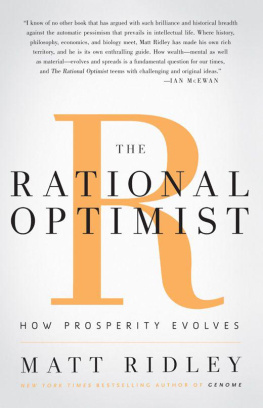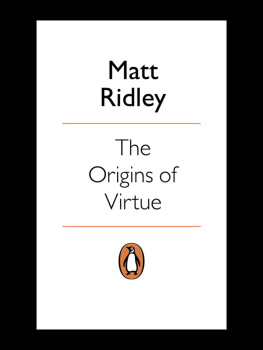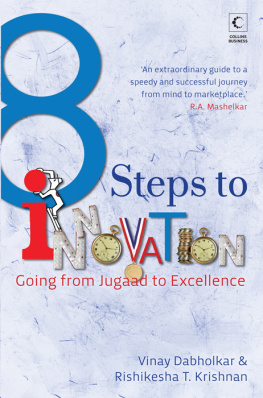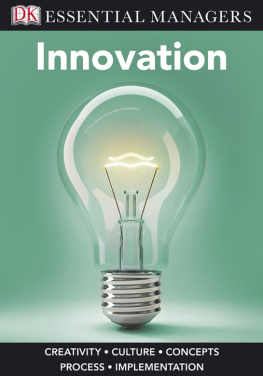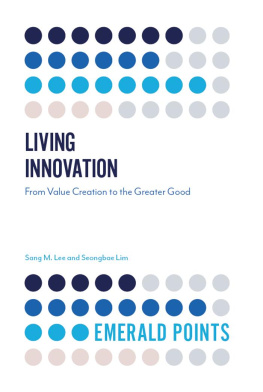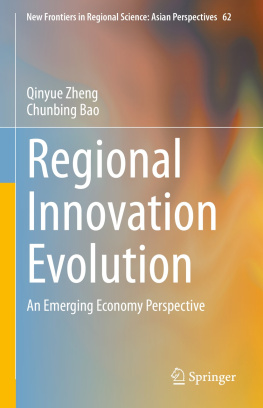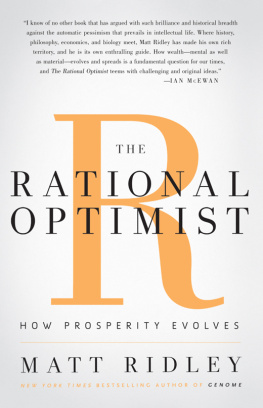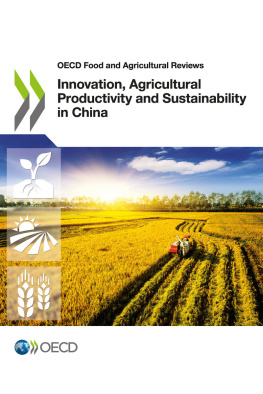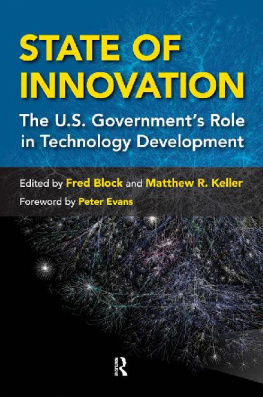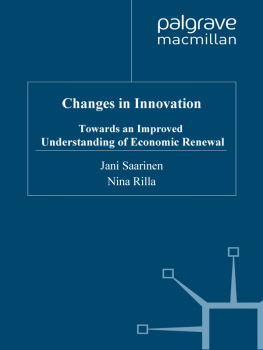Contents
Guide
For Felicity Bryan
Contents
Innovation offers the carrot of spectacular reward or the stick of destitution.
J OSEPH S CHUMPETER
I am walking along a path on the Inner Farne, an island off the coast of north-east England. By the side of the path, amid the sea-campion flowers, sits a female eider duck, dark brown and broody, silently incubating her clutch of eggs. I stoop to take a picture of her with my iPhone from a few feet away. She is used to this: hundreds of visitors come here every day in summer and many will take her picture. For some reason, an idea pops into my head as I click: a riff on the second law of thermodynamics based on a remark by my friend John Constable. The idea is this: the electricity in the iPhones battery and the warmth in the eider ducks body are doing roughly the same thing: making improbable order (photographs, ducklings) by expending or converting energy. And then I think that the idea Ive just had itself, like the eider duck and the iPhone, is also an improbable arrangement of synaptic activity in my brain, also fuelled by energy from the food I have recently eaten, of course, but made possible by the underlying order of the brain, itself the evolved product of millennia of natural selection acting on individuals, each of whose own improbabilities were sustained by energy conversion. Improbable arrangements of the world, crystallized consequences of energy generation, are what both life and technology are all about.
In Douglas Adamss The Hitchhikers Guide to the Galaxy, Zaphod Beeblebroxs starship Heart of Gold a metaphor for wealth is powered by a fictional infinite improbability drive. Yet a near-infinite improbability drive does indeed exist, but here on Planet Earth, in the shape of the process of innovation. Innovations come in many forms, but one thing they all have in common, and which they share with biological innovations created by evolution, is that they are enhanced forms of improbability. That is to say, innovations, be they iPhones, ideas or eider ducklings, are all unlikely, improbable combinations of atoms and digital bits of information. It is astronomically improbable that the atoms in an iPhone would be neatly arranged by chance into millions of transistors and liquid crystals, or the atoms in an eider duckling would be arranged to form blood vessels and downy feathers, or the firings of neurons in my brain would be arranged in such a pattern that they can and sometimes do represent the concept of the second law of thermodynamics. Innovation, like evolution, is a process of constantly discovering ways of rearranging the world into forms that are unlikely to arise by chance and that happen to be useful. The resulting entities are the opposite of entropy: they are more ordered, less random, than their ingredients were before. And innovation is potentially infinite because even if it runs out of new things to do, it can always find ways to do the same things more quickly or for less energy.
In this universe it is compulsory, under the second law of thermodynamics, that entropy cannot be reversed, locally, unless there is a source of energy which is necessarily supplied by making something else even less ordered somewhere else, so the entropy of the whole system increases. The power of the improbability drive is therefore limited only by the supply of energy. So long as human beings apply energy to the world in careful ways, they can create ever more ingenious and improbable structures. The medieval castle at Dunstanburgh I can see from the island is an improbable structure, and its partial ruin after 700 years is more probable, more entropic. The castle in its prime was the direct consequence of the expenditure of lots of energy, in this case mainly in the muscles of masons who were fed with bread and cheese that was made from wheat and grass that was grown in sunlight and eaten by cows. John Constable, a former Cambridge and Kyoto academic, points out that the things we rely on to make our lives prosperous are
all of them, without exception, physical states far from thermodynamic equilibrium, and the world was brought, sometimes over long periods of time, into these convenient configurations by energy conversion, the use of which reduced entropy in one corner of the universe, ours, and increased it by an even larger margin somewhere else. The more ordered and improbable our world becomes, the richer we become, and, as a consequence, the more disordered the universe becomes overall.
Innovation, then, means finding new ways to apply energy to create improbable things, and see them catch on. It means much more than invention, because the word implies developing an invention to the point where it catches on because it is sufficiently practical, affordable, reliable and ubiquitous to be worth using. The Nobel Prize-winning economist Edmund Phelps defines an innovation as a new method or new product that becomes a new practice somewhere in the world. In the pages that follow I will trace the path of ideas from the invention to the innovation, through the long struggle to get an idea to catch on, usually by combining it with other ideas.
And here is my starting point: innovation is the most important fact about the modern world, but one of the least well understood. It is the reason most people today live lives of prosperity and wisdom compared with their ancestors, the overwhelming cause of the great enrichment of the past few centuries, the simple explanation of why the incidence of extreme poverty is in global freefall for the first time in history: from 50 per cent of the world population to 9 per cent in my lifetime.
What made most of us, not just in the West but in China and Brazil too, unprecedentedly rich, so the economic historian Deirdre McCloskey says, was innovationism: the habit of applying new ideas to raising living standards. No other explanation of the great enrichment of recent centuries makes any sense. Trade had been expanding for centuries, and colonial exploitation with it, and these alone were unable to give anything like the order of magnitude of improvement in incomes that happened. There was no sufficient accumulation of capital to make such a difference, no piling of brick on brick, or bachelors degree on bachelors degree in McCloskeys words. There was no sufficiently great expansion in the availability of labour. Nor was the scientific revolution of Galileo and Newton responsible, for most of the innovations that changed peoples lives at least at first owed little to new scientific knowledge and few of the innovators who drove the changes were trained scientists. Indeed many, such as Thomas Newcomen, the inventor of the steam engine, or Richard Arkwright of the textile revolution, or George Stephenson of the railways, were poorly educated men of humble origins. Much innovation preceded the science that underpinned it. The Industrial Revolution therefore was in effect, as Phelps has argued, the emergence of a new kind of economic system that generated endogenous innovation as a product in itself. I will argue that some machines themselves made this possible. A steam engine proved to be autocatalytic: it drained the mines, which cut the cost of coal, which made the next machine cheaper and easier to make. But I am getting ahead of myself.
The word innovation is invoked with alarming frequency by companies trying to sound up to date but with little or no systematic idea about how it occurs. The surprising truth is that nobody really knows why innovation happens and how it happens, let alone when and where it will happen next. One economic historian, Angus Maddison, wrote that technical progress is the most essential characteristic of modern growth and one that is most difficult to quantify or explain; another, Joel Mokyr, said that scholars know remarkably little about the kind of institutions that foster and stimulate technological progress.
Next page

